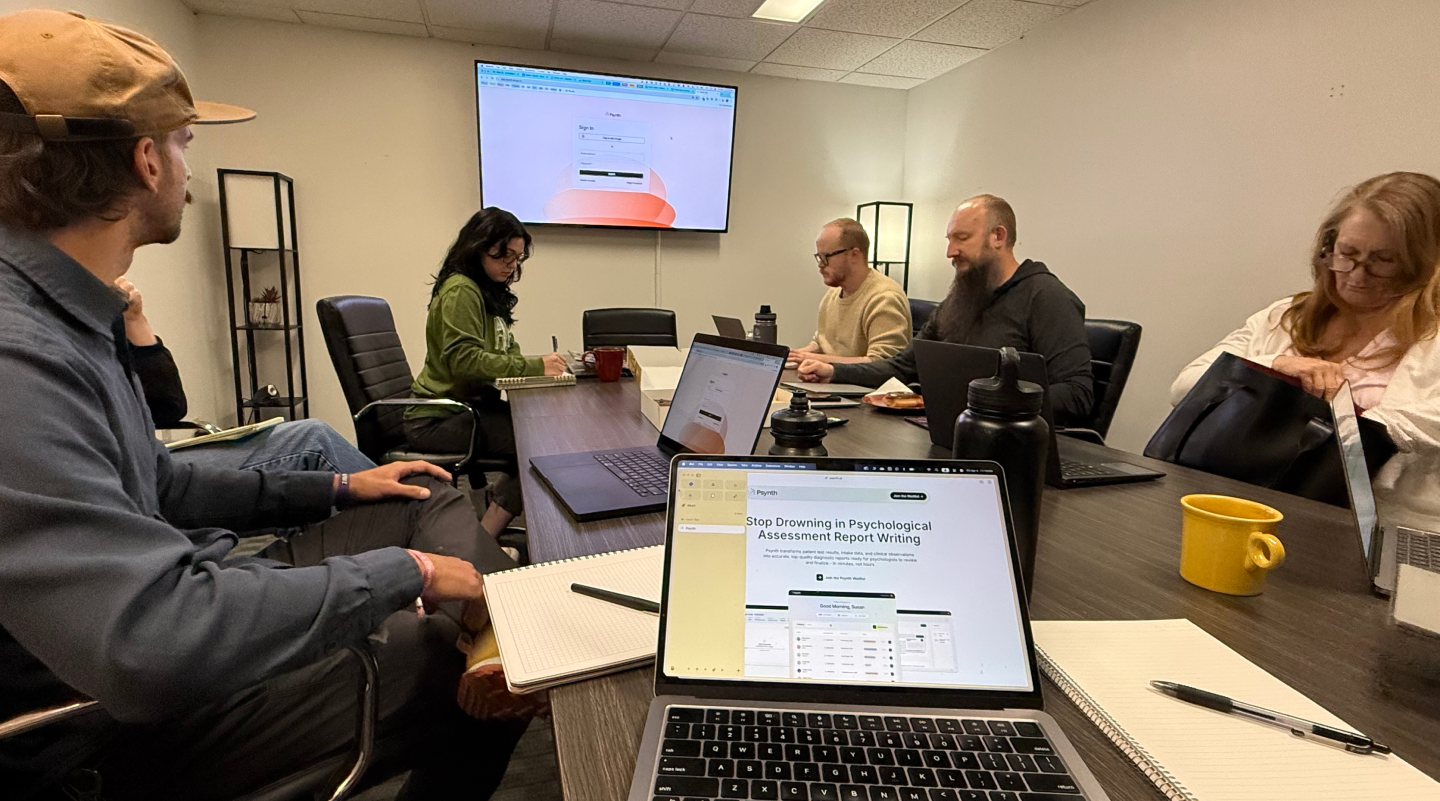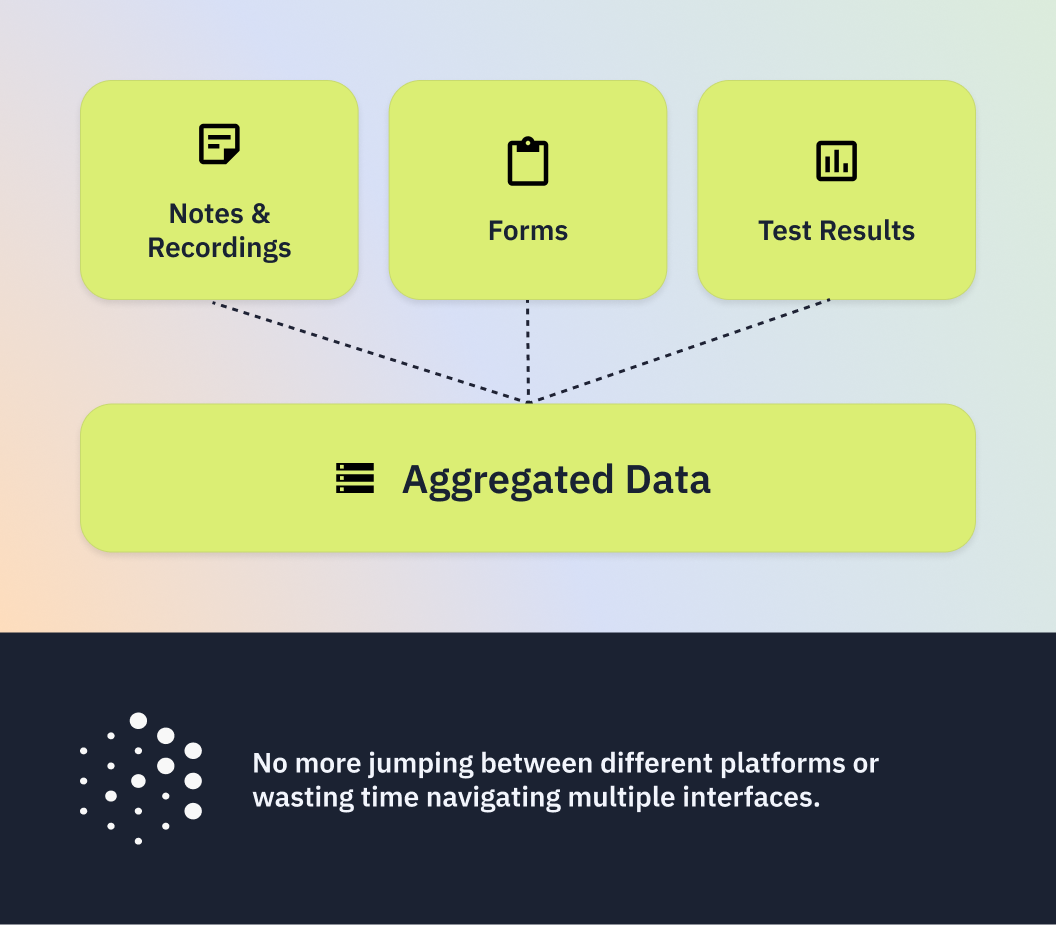Building Psynth with psychologists, not just for them.

Rapid Prototyping: Human-in-the-Loop by Design
Once we had signal, we began building in short, iterative sprints. Our team rapidly created a prototype using single-shot prompting in a code notebook to create an example report.
Each prompt specialized in a component of the psychologist’s workflow: one structuring intake responses, another interpreting test scores, another drafting narrative summaries, and so on. The challenge was not only technical accuracy, but creating something clinicians could understand, customize, and trust.
We didn’t aim to replace clinical judgment—we built a cognitive copilot, capable of doing the heavy lifting while keeping the psychologist in the driver’s seat.

Rapid Feedback from Clinical Experts
We embedded feedback loops from the beginning. Over the course of development, we worked closely with more than 100 psychologists—design partners who reviewed drafts, pressure-tested logic, and helped us shape the user experience.

This feedback reinforced our core design principle: AI should feel like collaboration, not delegation.
A Strong Foundation, Built on Trust and Insight
By the end of our prototyping phase, we weren’t just confident in the technology—we were confident in the fit. We had a tool shaped by clinicians, tested in context, and built with a clear understanding of its real-world impact.
We had validated not only the problem, but the solution:
- Psychologists wanted a cognitive copilot, not a black box
- They valued transparency, flexibility, and control
- And they were ready to bring this kind of AI into their workflow—now
We had the clarity we needed, the relationships in place, and a strong, clinician-backed product ready to scale.
Next came the real test: launching Psynth into the world.